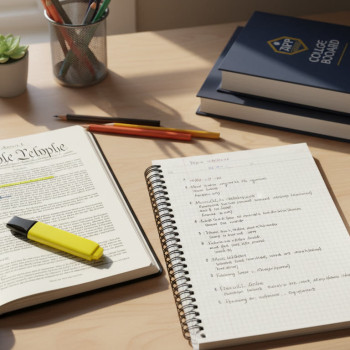Why Diction, Tone, and Function Matter — and Why MCQs Test Them
If the AP Language exam were a relay race, diction, tone, and function would be three runners who hand off the baton every few lines. They’re small, fast-moving pieces of the text that reveal the writer’s choices and intent. The multiple-choice section loves testing them because the answers are usually right there — not always obvious, but detectable with the right tools.

What This Post Will Do for You
By the end of this post you’ll be able to: identify precise diction choices, read tone like a pro, and determine the function of passages and sentences — all with concrete strategies you can use under timed conditions. I’ll share quick heuristics, practice examples (with worked reasoning), a study plan, and a sample comparison table that helps you separate similar answer choices. Where it fits naturally, I’ll also note how Sparkl’s personalized tutoring can accelerate your progress through 1-on-1 guidance and tailored study plans.
First Principles: Definitions That Stick
Diction — The Writer’s Vocabulary
Diction = word choice. It’s more specific than simply “formal” or “informal.” When you analyze diction, notice connotation (emotional weight), denotation (literal meaning), specificity (vague vs. precise), and modality (certainty vs. tentativeness). On MCQs, look for single-word cues or short phrases that shift meaning.
Tone — The Writer’s Attitude
Tone = attitude or stance toward the subject and audience. Tone can be earnest, ironic, sarcastic, wistful, didactic, celebratory, skeptical, etc. Important: tone is not mood (mood is what the reader feels); tone is the author’s voice. Small diction changes often create tone shifts.
Function — The Writer’s Purpose in a Moment
Function asks: Why is this sentence/paragraph here? Is it to contrast, to exemplify, to concede, to summarize, to explain cause and effect, or to introduce evidence? Many MCQs ask about a sentence’s function within a passage — and that’s where structure reading helps.
How to Read MCQ Passages Efficiently
Step 1: Quick Passage Mapping (45–60 seconds)
- Scan the first and last paragraph(s) to get the main claim.
- Note paragraph function (intro, refutation, example, concession, conclusion).
- Underline or flag transition words (however, moreover, thus, yet).
Step 2: Target the Question (15–20 seconds)
Read the question carefully — are they asking about diction, tone, or function? If diction or tone, zero in on the referenced sentence or phrase. If function, read the sentence and the one before and after it.
Step 3: Eliminate the Noise (30–45 seconds)
On the MCQ, wrong answers are often extreme, off-topic, or only partially true. Use these elimination rules:
- Extreme language in choices? Be suspicious. AP often favors precise, moderate wording.
- Choices that state a true fact but irrelevant to the question? Cross them out.
- Answers that reverse cause and effect are common traps.
Practical Heuristics for Each Type
Diction Questions — Scan for Connotation and Specificity
When the question highlights a word or short phrase, do this:
- Read one sentence before and after the word to capture context.
- Ask: Is the word positive, negative, or neutral? Is it formal or colloquial? Is it concrete or abstract?
- Compare choices for subtle differences: gloomy vs. somber, criticize vs. censure, suggest vs. assert.
Example reasoning: If a sentence uses “lop-sided” vs. “imbalanced,” “lop-sided” carries an informal, slightly judgmental flavor; “imbalanced” is more clinical. If the passage is analytical, the AP answer will likely prefer the more formal, precise term.
Tone Questions — Find the Anchor Words
Tone questions are often solved by spotting attitude-bearing words (always, surprisingly, regrettably) and punctuation (dashes, parentheses, exclamation points). Pay attention to:
- Irony markers: contradiction between description and probable reality.
- Qualifiers: words that soften or intensify (merely, truly, hardly, decidedly).
- Comparatives and superlatives: they often signal judgment.
Tip: Label tones quickly in the margin (e.g., “wry,” “admiring,” “skeptical”), then match the label to answer choices. Don’t be seduced by vocabulary — aim for the best single-word match to the author’s attitude.
Function Questions — Think About the Passage Flow
Function questions ask why a detail exists. Read the surrounding sentences and ask: What does the writer gain by inserting this here? Typical functions include:
- Illustration: provides an example of a general claim.
- Contrast: shows an opposing instance to clarify the claim.
- Qualification: introduces limits to an earlier statement.
- Evidence: supports a claim with data or testimony.
Remember: function is contextual. The exact same sentence can function differently in a different spot.
Worked Example Walkthroughs
Below are two concise, realistic examples. I’ll show the passage excerpt, the question focus, and a short reasoning chain that mirrors how you should think on test day.
Example 1: Diction + Tone
Passage excerpt: “The mayor’s pronouncements, delivered with a theatrical bravado, skirted the issue of funding altogether.”
Question (paraphrased): The word “bravado” most nearly suggests that the mayor’s delivery was…
- Test each connotation: Bravado often implies showiness with possible lack of substance — theatrical confidence that masks insecurity.
- Check context: “skirted the issue” suggests avoidance. Bravado here likely signals bluster rather than sincerity.
- Choose the answer that captures ostentation masking emptiness (e.g., “showy and insincere”).
Why wrong answers fail: “confident and well-informed” ignores the avoiding language; “angry” is unrelated to theatrical display.
Example 2: Function
Passage excerpt: “Although some critics applaud the innovation, the central problem remains: scalability.”
Question (paraphrased): The clause beginning “Although some critics…” functions primarily to…
- Identify the signal: “Although” is a concession marker.
- Read what follows: the main clause introduces the problem of scalability.
- Therefore: the clause concedes a counterpoint (critical praise) before emphasizing the author’s primary concern.
Answer: Acknowledge an opposing view while advancing the main argument.
Quick Comparison Table: Distinguishing Similar Answer Choices
| Choice Type | Typical Trap | Spotting Heuristic | MCQ Test Tip |
|---|---|---|---|
| Tone: Sarcastic vs. Ironic | Both seem negative; sarcasm aims to mock a target; irony highlights contrast. | Look for a direct target (sarcasm) vs. a situational mismatch (irony). | If author ridicules a person or idea, prefer sarcastic; if describing unexpected outcome, prefer ironic. |
| Diction: Colloquial vs. Informal | Both casual; colloquial includes regional or conversational markers. | Check for slang, contractions, idioms (colloquial). | In academic passages, AP often expects ‘informal’ as neutral; choose colloquial only when slang or dialect appears. |
| Function: Illustration vs. Evidence | Examples can be both; evidence is tied directly to proving a claim. | Does the sentence support the thesis with proof (evidence) or merely clarify with an example (illustration)? | If data or quotation is present, lean evidence; if an anecdote, lean illustration. |
Timed Practice Routine (Two-Week Plan)
This plan focuses on steady, test-like practice. It blends skill-building with targeted MCQ drills and allows room for review.
- Days 1–3: Focus on diction. Read 6 passages per day, 15–20 minutes each. Mark diction choices and write 2–3 words describing connotation.
- Days 4–6: Focus on tone. Read 6 passages per day, label tones in the margin, and practice discarding two wrong choices per question.
- Days 7–9: Function week. Practice locating sentence function quickly; summarize each paragraph’s role in one sentence.
- Days 10–11: Mixed sets under timed conditions (40 minutes for 25 questions).
- Day 12: Review missed items, categorize errors (misread, rushed, vocabulary gap, trap answer).
- Day 13: Strategy day — work only on elimination tactics and pacing.
- Day 14: Full practice test section to simulate real conditions.
Sparkl’s personalized tutoring can be helpful during this phase: a tutor can design drills targeted to your most frequent error types, run timed section simulations, and provide AI-driven insights on which question types you miss most often. If you struggle to calibrate pacing, 1-on-1 guidance helps fine-tune your timing strategy quickly.
Common Pitfalls and How to Fix Them
- Relying on a single word out of context: Always read a sentence before and after. Context often flips meaning.
- Choosing the best-sounding choice instead of the best-supported one: Pick the answer that the passage supports, not the one you personally prefer.
- Falling for attractive extreme choices: AP favors precise, defensible answers. If an answer is sweeping, it’s usually wrong.
- Confusing tone with topic: Don’t let subject matter (e.g., war, politics) dictate tone — focus on how the author writes about it.
Vocabulary Tips That Actually Help
Instead of memorizing long lists of words, learn categories and connotations. Group words by the attitudes they convey:
- Certainty vs. tentativeness (certain, assured, maybe, perhaps)
- Emotional intensity (calm, measured, fiery, vehement)
- Formality (colloquial, conversational, academic, technical)
Practice by annotating short articles: highlight one word per paragraph that carries tone, and write a one-word label next to it (e.g., “wry,” “approving,” “didactic”). Over time you’ll notice patterns and answer diction/tone questions faster.
How to Handle Two-Answer Tug-of-Wars
AP often narrows decisions down to two plausible options. Use this funnel:
- Step 1: Return to the passage sentence — isolate the exact clause the question references.
- Step 2: Replace each answer choice back into the sentence mentally — which one preserves the meaning and nuance of the passage?
- Step 3: Ask whether each choice is supported by context clues (transition words, evidence, or later explanation).
If both still look possible, prefer the choice that is less broad (more specific) and better tied to the passage’s central claim.
Mini Practice Set (Three Questions) — Try It Out
Work these under a timer — 90 seconds each.
- Q1 (Diction): In a sentence describing a scientist’s approach as “measured,” which connotation is most likely intended? (A: Calm and deliberate; B: Cold and emotionless; C: Slow; D: Hesitant) — Best: A (context will usually pair “measured” with precision and control).
- Q2 (Tone): A passage uses understatement and short, clipped sentences when describing disaster; what tone is implied? (A: Reverent; B: Detached; C: Alarmed; D: Nostalgic) — Best: B (understatement + clipped sentences often create distance or detachment).
- Q3 (Function): A parenthetical anecdote that follows a general claim likely functions to: (A: Provide statistical proof; B: Illustrate the claim; C: Deny the claim; D: Summarize previous points) — Best: B (anecdotes most often illustrate).
Last-Minute Test-Day Checklist
- Get a good night’s sleep — tiredness blunts nuance detection.
- Do a 20–30 minute warm-up: three short passages focusing on diction and tone.
- During the test: mark and move on if you’re stuck; come back with fresh eyes.
- Watch the clock: allocate about 1.4–1.6 minutes per question in a packed section, leaving time to revisit the hardest ones.
Putting It All Together — A Short Case Study
Sophia, a rising senior, was scoring 60–65% on mixed MCQ sets. After two weeks of focused diction and tone drills (practice, error logging, one mock section per week), she improved to 80–85% on similar sets. What changed? Sophia stopped guessing on two-answer traps and began marking the exact textual support for each choice before committing. A tutor helped her refine pacing and gave tailored practice on concession and qualification questions — the kinds she missed most. This is where Sparkl’s personalized tutoring can accelerate results: a tutor’s targeted feedback and data-driven insight shortened her learning curve and made practice more efficient.
A Final Pep Talk
Diction, tone, and function feel like tiny details, but they’re where the AP Language test separates careful readers from casual ones. The good news? These skills are learnable. Start with context, annotate deliberately, and practice the elimination strategies until they become reflex. With thoughtful practice and, if useful, a tutor to tailor a plan to your weaknesses, you’ll find the MCQs less mysterious and more beatable.

Need a Plan Built for You?
If you’d like a personalized study plan or focused practice sets for diction, tone, and function, consider working with a tutor who can diagnose your error patterns and build drills that target those weak spots. A mix of 1-on-1 guidance, tailored study plans, and AI-driven insights can make practice time more productive — not longer.
Ready to Start Practicing?
Pick one technique from this post and use it on your next passage: annotate connotation-heavy words, label tones in the margins, or summarize sentence function in one line. Improve one small habit each week, and your MCQ score will follow. Good luck — you’ve got this.
























No Comments
Leave a comment Cancel